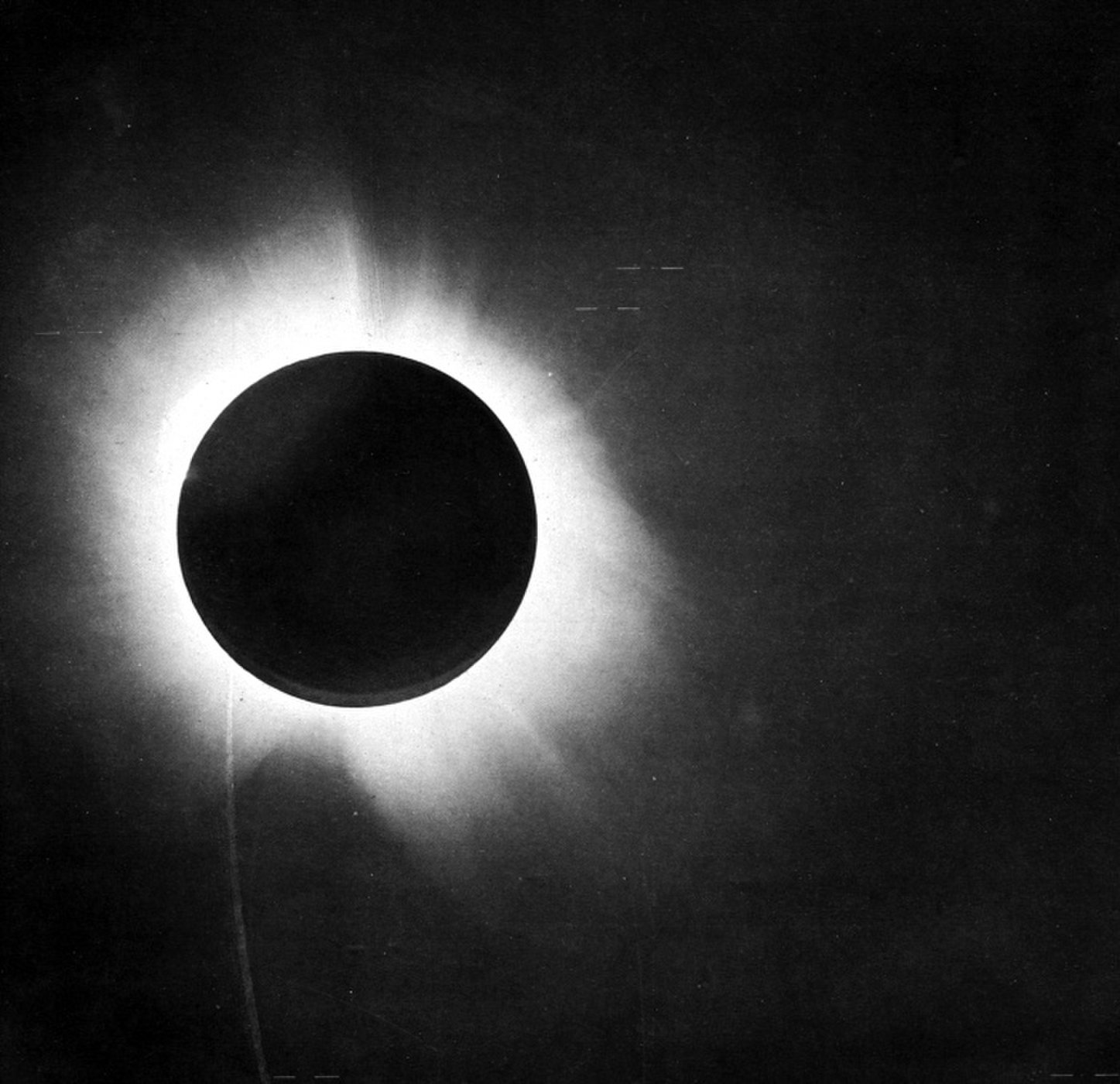Upcoming Solar Eclipse Is a Chance to Prove Einstein Right (Again)

For some skywatchers, the upcoming total solar eclipse on Aug. 21 is more than just a chance to catch a rare sight of the phenomenon in the United States. It's also an opportunity to duplicate one of the most famous experiments of the 20th century, which astrophysicist Arthur Eddington performed in an attempt to prove that light could be bent by gravity, a central tenet of Albert Einstein's theory of general theory.
Amateur astronomer Don Bruns is among those hoping to re-do the experiment. "I thought of it about two years ago. I thought, surely, other people have done it," he told Live Science. "But no one had done it since 1973," Bruns said, when a team from the University of Texas went to Mauritania for the solar eclipse on June 30 of that year.
The group ran into technical problems, though, and could not confirm Eddington's results with much accuracy. Other attempts — such as one made for an eclipse on Feb. 25, 1952, in Khartoum by the National Geographic Society — fared somewhat better. [10 Solar Eclipses That Changed Science]
In 1915, Einstein published his theory of general relativity, which states that light will bend around massive objects because space itself becomes curved around such objects. A chance to test the theory came several years later, when a total solar eclipse was set to darken skies on May 29, 1919.
For the 1919 eclipse, Eddington led an expedition to measure the deflection of light from stars near the sun in the sky. Observing from Brazil and Africa, simultaneously, Eddington and his colleagues noted that the position of the stars close to the solar limb differed by a small amount from their catalogued positions, agreeing with the predicted 1.75 arc seconds (or 0.00049 degrees). The announcement that the experiment was a success made Einstein famous.
But later analyses of Eddington's data seemed to suggest that the astrophysicist's confirmation might not have been the slam dunk he thought it was. Bruns said the debate over Eddington's data is why he wants to do the experiment again.
"All these experiments, and the best they could get was maybe 10 percent error," he said. "I think I can get 2 percent." Modern instrumentation, as well as more accurate measurements of the positions of the stars, should help refine the measurements needed to replicate Eddington's experiment this time around, he added.
Sign up for the Live Science daily newsletter now
Get the world’s most fascinating discoveries delivered straight to your inbox.
Bruns is taking few chances; he's going to a high-altitude location in Wyoming, where he's likely to have clear skies for the eclipse. And to make sure his telescope's aim is as accurate as it can be, he plans to stabilize his telescope mount by laying down a concrete slab the day before. "We have some quick-set cement," he said. The slab will also help ensure his mount is absolutely level.
And Bruns is not alone. Richard Berry, the former editor in chief of Astronomy Magazine, will be using his home-built observatory (known as Alpaca Meadows Observatory) to duplicate the Eddington experiment from Lyons, Oregon. [How to Make a Solar Eclipse Viewer (Photos)]
"I'm working in coordination with Toby Dittrich of Portland Community College and a group of four physics students," he told Live Science in an email. "Toby will be on the Oregon coast, and one of the students will be in eastern Oregon at the Oregon Star Party. Since I live on the center line [the path of totality], one or two of the students and I will take images for the experiment."
Berry has taken spectrographic images of the solar corona before, but this experiment is harder, because it involves taking an image of the star field that the sun is located in when the sun isn't there, and it requires getting a very precise measurement of the stellar positions when the sun is there during the eclipse.
There's also an outreach element to duplicating the experiment, said Rachel Freed, a science-curriculum consultant at Sonoma State University in Rohnert Park, California. "There's been a massive move to raise awareness," she said, in light of the August eclipse being visible across the United States. Sonoma State's Education and Public Outreach department has a website that describes how amateur astronomers can take part in the event, and what equipment they should use to view the eclipse.
Bradley Schaefer, a professor of astronomy at Louisiana State University in Baton Rouge, has detailed the equipment that skywatchers will need to do a modern-day version of Eddington's experiment. On Schaefer's website, he says it's possible for modern skywatchers to use off-the-shelf equipment and get much better accuracy than Eddington did nearly a century ago. According to the site, his goal is to get many people involved, because more measurements mean better precision and accuracy. In that sense, amateur astronomers could make some real contributions to science during the upcoming solar eclipse.
But even if you don't plan on conducting any science during the celestial event, an eclipse is still well worth seeing, Freed said — even without any fancy equipment. "During totality, you don't want to use anything," she said. "Just look at it, especially if you've never seen one."
REMEMBER: Looking directly at the sun, even when it is partially covered by the moon, can cause serious eye damage or blindness. NEVER look at a partial solar eclipse without proper eye protection. Our sister site Space.com has a complete guide explaining how to view an eclipse safely.
Original article on Live Science.












